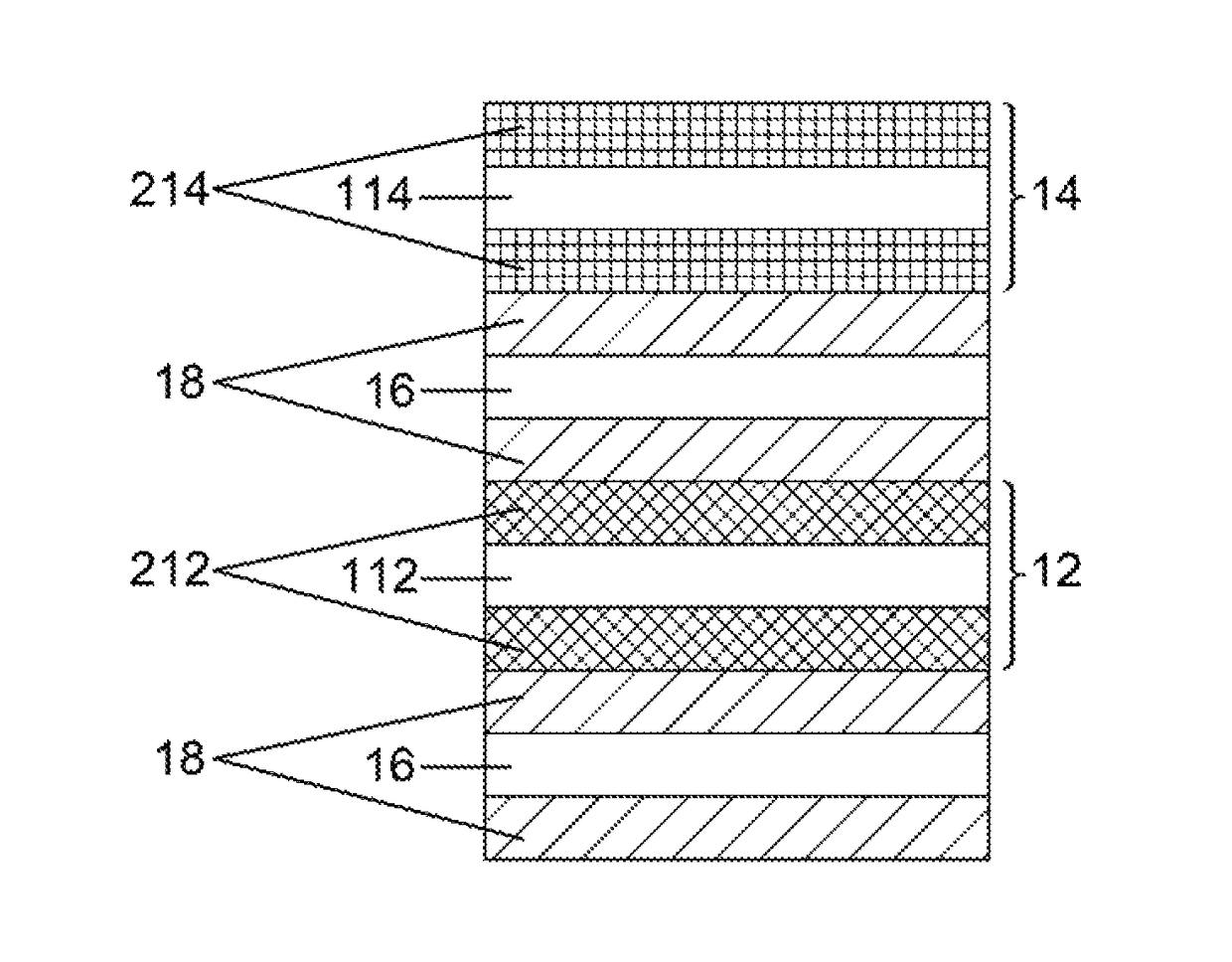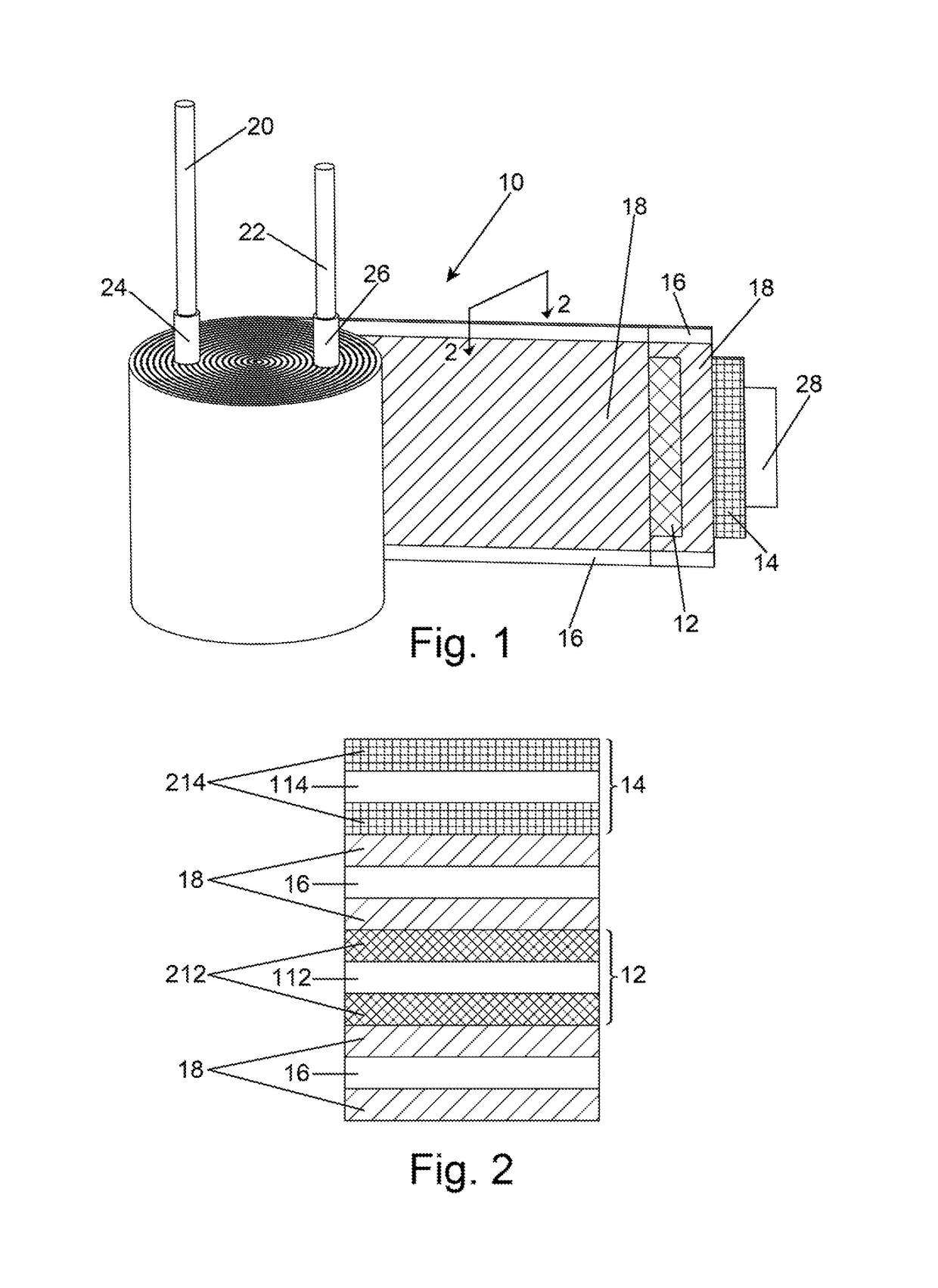Hybrid capacitor and method of manufacturing a capacitor
a hybrid capacitor and capacitor technology, applied in the field of hybrid capacitors, can solve the problems of poor process reliability, high capacitance of liquid electrolytic capacitors, complicated manufacturing stages, etc., and achieve the effects of low esr, enhanced performance, and improved quality
- Summary
- Abstract
- Description
- Claims
- Application Information
AI Technical Summary
Benefits of technology
Problems solved by technology
Method used
Image
Examples
Embodiment Construction
(I-1)
[0053]Anodized aluminum anode foils and aluminum cathode foils of sizes and capacitance rating as shown in Table 1 were heat treated at 300±5° C. for 30±5 min. The anode foil was subjected to a first edge formation treatment by immersing in 5% oxalic acid at 30±5° C. at a voltage of 5 mA / cm2. The foil was washed for a minimum of 5 minutes and dried at 125±5° C. for 25-30 min. The anode foil was heat treated at 300±5° C. for 30±5 min followed by a second edge formation in 1% ammonium citrate at a voltage of 1.5 mA / cm2 at 50±5° C. followed by washing for at least 5 min and drying at 125±5° C. for 25-30 min. The anode and cathode were subjected to a silane treatment for 15-30 sec. in a solution comprising 4935 ml+ / −50 ml DI Water, 15 ml+ / −0.5 ml acetic acid and 50 ml+ / −1 ml 3-glycidoxypropyltrimethoxysilane at a pH of 3.0+ / −1.0. The anode and cathode foils were again heat treated 300±5° C. for 30±5 min. The anode was anodized again to oxidize the edges in 0.1% ammonium phosphate a...
PUM
| Property | Measurement | Unit |
|---|---|---|
| wt % | aaaaa | aaaaa |
| diameter | aaaaa | aaaaa |
| diameter | aaaaa | aaaaa |
Abstract
Description
Claims
Application Information
 Login to View More
Login to View More - R&D
- Intellectual Property
- Life Sciences
- Materials
- Tech Scout
- Unparalleled Data Quality
- Higher Quality Content
- 60% Fewer Hallucinations
Browse by: Latest US Patents, China's latest patents, Technical Efficacy Thesaurus, Application Domain, Technology Topic, Popular Technical Reports.
© 2025 PatSnap. All rights reserved.Legal|Privacy policy|Modern Slavery Act Transparency Statement|Sitemap|About US| Contact US: help@patsnap.com



